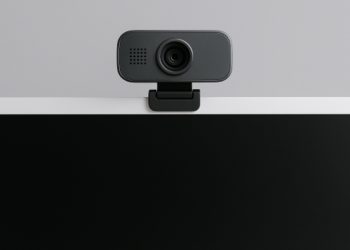Hair loss is a common concern that affects millions worldwide, and the quest for effective solutions has led to significant advancements in hair transplant techniques. Follicular Unit Extraction (FUE) has emerged as a leading method due to its minimally invasive nature and impressive results. However, when considering FUE, one faces a critical choice: robotic or manual. This blog compares these two techniques comprehensively, helping you determine which is the right fit for your needs.
Understanding FUE Hair Transplants
What is FUE?
Follicular Unit Extraction, commonly known as FUE, is a hair transplant method where individual hair follicles are extracted from a donor area (typically the back or sides of the head) and transplanted to the thinning or balding areas. Unlike the older Follicular Unit Transplantation (FUT) technique, FUE does not involve removing a strip of scalp, thus minimising scarring and offering a quicker recovery.
Benefits of FUE
Minimal Scarring: FUE involves extracting individual follicles, resulting in tiny, almost invisible scars.
Natural-Looking Results: The meticulous placement of follicles ensures a natural hairline and density.
Quick Recovery Time: Patients typically experience a faster recovery compared to FUT, with most returning to normal activities within a week.
Introduction to Robotic FUE
What is Robotic FUE?
Robotic FUE utilises advanced technology, such as the ARTAS system, to assist surgeons in performing hair transplants. This system uses artificial intelligence to identify and harvest the best hair follicles for transplantation, ensuring precision and consistency. With the help of advanced imaging and mechanical precision, a robotic arm can accurately extract individual hair follicles from the donor area with minimal human intervention. This leads to a reduced risk of human error and potentially faster procedure times.
Procedure Steps
Pre-Procedure Preparations: The scalp is analysed and mapped using advanced imaging technology.
Harvesting: The robotic system extracts individual follicles with minimal trauma to the surrounding tissue.
Processing and Implanting: The extracted follicles are carefully processed and implanted into the recipient area.
Post-Procedure Care: Detailed aftercare instructions are provided to ensure optimal healing and growth.
Advantages of Robotic FUE
Precision and Accuracy: The robotic system identifies and extracts high-quality follicles, reducing the risk of damage.
Consistency: Automated extraction ensures uniform quality of grafts.
Reduced Human Error: The involvement of advanced technology minimises the likelihood of errors during extraction.
Disadvantages of Robotic FUE
Cost: Robotic procedures are more expensive due to the advanced technology used.
Availability: Not all clinics can access robotic systems, which may limit your options.
Technical Issues: Dependence on technology means there’s a risk of technical malfunctions or glitches.
Introduction to Manual FUE
What is Manual FUE?
On the other hand, manual FUE involves using handheld instruments to extract hair follicles from the donor area. This technique requires a skilled surgeon to manually locate and remove each follicle, making it more time-consuming than robotic FUE. However, some experts argue this allows for greater control and accuracy when extracting the follicles.
Procedure Steps
Pre-Procedure Preparations: The surgeon evaluates the donor and recipient areas and plans the extraction process.
Harvesting: Using a handheld tool, the surgeon manually extracts individual follicles.
Processing and Implanting: Extracted follicles are processed and then meticulously implanted by the surgeon.
Post-Procedure Care: The patient receives comprehensive aftercare instructions for successful healing and hair growth.
Advantages of Manual FUE
Control and Customisation: The surgeon can make real-time adjustments based on the patient’s hair characteristics and scalp condition.
Potentially More Affordable: Manual FUE can be less expensive than robotic procedures.
Experienced Surgeons: A skilled surgeon can achieve excellent, natural-looking results.
Disadvantages of Manual FUE
Time-Consuming: The manual extraction process can be lengthy, particularly for large areas.
Potential for Human Error: The procedure’s success heavily relies on the surgeon’s skill and precision.
Surgeon Fatigue: Long procedures may lead to surgeon fatigue, which could impact the quality of the results.
Key Factors to Consider
Your Specific Hair Loss Situation
Degree and Pattern of Hair Loss: The extent and pattern of your hair loss will influence the number of grafts needed and the suitability of each method.
Donor Hair Quality and Availability: Assess the quality and quantity of your donor hair with your surgeon.
Surgeon’s Experience and Skill
Qualifications and Experience: Ensure your surgeon is highly qualified and experienced in performing robotic and manual FUE.
Evaluating Credentials: Look for reviews, before-and-after photos, and patient testimonials.
Cost and Budget
Comparing Costs: Consider the total cost of each procedure, including potential follow-up treatments. Treating a small area of the scalp (1500 grafts) with a robotic technique such as ARTAS will cost around £3,699, whereas a manual technique will cost around £2,499.
Long-Term Value: Evaluate the long-term benefits and potential need for additional procedures.
Recovery and Downtime
Expected Recovery Times: Understand the typical recovery timeline for each method.
Post-Operative Care: Follow the aftercare instructions to ensure optimal results.
Desired Results
Managing Expectations: Have realistic expectations about the outcomes of your chosen method.
Viewing Results: Look at before-and-after photos to gauge potential results.
Making the Decision
Consultations and Second Opinions
Multiple Consultations: Schedule consultations with several surgeons to gather different opinions and options.
Essential Questions: Ask about the surgeon’s experience, success rates, and personalised recommendations.
Personal Preferences
Comfort with Technology: Decide if you feel more comfortable with advanced technology or a highly skilled manual approach.
Health and Lifestyle Considerations: When deciding, factor in your overall health and lifestyle.
Making an Informed Decision: Robotic vs. Manual FUE Hair Transplants
Choosing between robotic and manual FUE hair transplants is a significant decision that depends on various factors, including your specific hair loss situation, budget, and personal preferences. Both methods offer unique advantages and potential drawbacks, making it essential to consult a qualified hair transplant specialist to determine the best approach for your needs. By thoroughly understanding each technique and considering all relevant factors, you can make an informed decision that will lead to the best possible outcome for your hair restoration journey.












































































